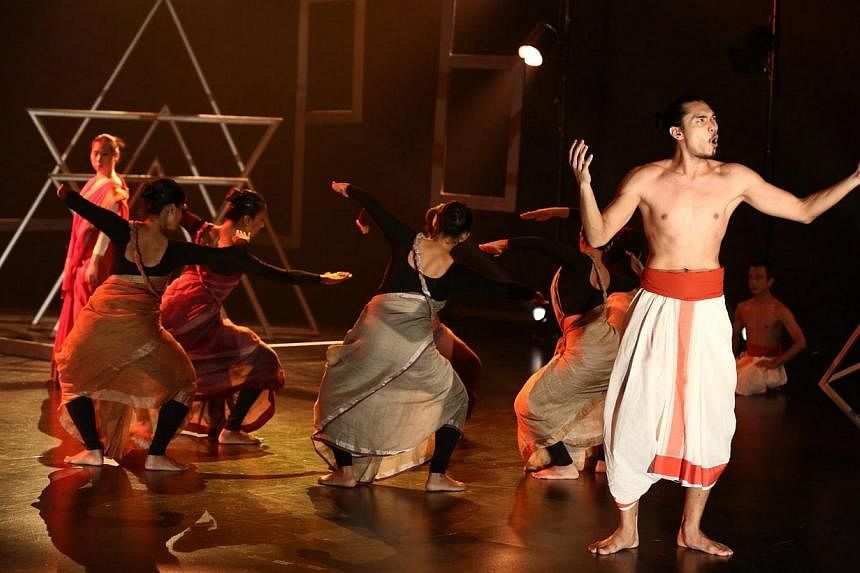Chowk Productions, headed by Raka Maitra, has been at the forefront in exploring the contemporising of traditional Indian dance.
Using her solid background in Odissi - one of the eight recognised Indian classical dance forms - as a departure point, most of Maitra's works have dealt with social themes and seen intensive collaborations with artists from numerous other disciplines.
The Blind Age, which played at the Esplanade Theatre Studio yesterday, feels like a major milestone for her company as she attempts an all-encompassing meeting of the performing arts, creating a completely immersive theatrical experience that is more about storytelling and less about the forms that constitute it.
Five minutes into the performance, I realised it would be futile to try to place it into the neat categories of either theatre or dance. These two forms, along with music, served as mere tools to bring across the larger purpose of telling a tragic tale of the human condition.
The choice of Dharamvir Bharati's prolific play, The Blind Age (Andha Yug), was befitting of Maitra's grand intentions. This famous Indian classic spoke of the dark period following the 1947 Partition of India.
In this bleak story, compassion took a back seat as vengeance and anger abound in one of the most tumultuous periods of the sub-continent's history.
Words were not minced as characters bemoaned the loss of humanity with phrases such as "blindness rules, not reason".
Descriptions such as "spittle, bile and pus" pointed to an abject state of decay.
The actors spoke in ominous voices that seemed to loom harrowingly in the tense air. Dancers echoed this sentiment by adding physical volume to the already dense atmosphere.
A memorable moment was when the dancers squatted low in a crouched position, their arms mimicking the flapping of large wings as the actors spoke of vultures circling above.
Maitra's strength has been to find common ground among the different disciplines so that meeting points can be created organically.
In the case of The Blind Age, physical expression was the uniting factor. Her dancers displayed an ever-increasing maturity in their dancing. The actors from the Intercultural Theatre Institute augmented their performance with expressive movement phrases.
It was a joy to watch actors who were equally adept at dramatic as well as highly formalised movement expression.
Geometric metal frames designed by The Damn Collective served as a jagged visual representation of the unfolding tragedy. Albert Wileo's lighting design created despondent hues that reminded one of flickering embers after a big fire.
The music was also a wonderful meeting of the traditional and contemporary as musicians Bijoy Chandra Barik, Srinibas Satpathy and Rupak Kumar Parida sat alongside local sound stalwart Bani Haykal to create soundscapes that enveloped the entire space with a sense of foreboding.
The only downside was the dance aspect which seemed a little diminished.
It definitely played its part, but I felt it echoed the narrative a little too literally. Many times, the dance served as a mere visual complement to what was being described in speech. This was a pity because the dance could have gone beyond superficial representation.
On the other hand, perhaps Maitra kept it simple in consideration of the many things that were already happening on the stage, in which case I would agree that she struck a fair balance.
The Blind Age showed the gradual development of Chowk's vision to present complete and meaningful theatre experiences that transcend classification. It was not a perfect work, but its numerous merits indicated that it is heading in the correct direction.

